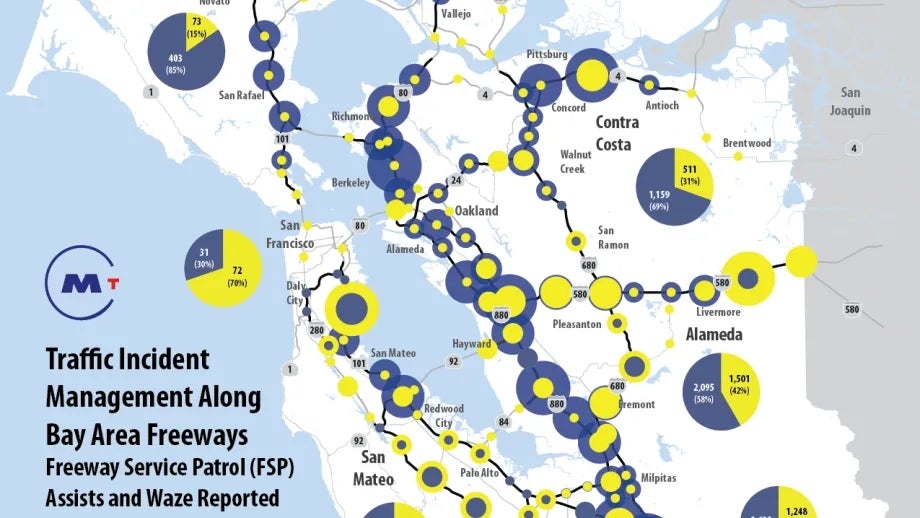Report to the Commission: March 22, 2017
Future Interstates Committee Meeting
February 23-24, San Francisco
The Bay Area Metro Center hosted a field hearing of the Future Interstates Committee convened by the National Academy of Sciences. As a committee member, I will be attending future hearings in Detroit and Chicago later in the spring.
NGA Infrastructure List Submitted
February 24, Washington, DC
You may recall that we went through a “fire drill” several weeks ago to assemble a list of high priority Bay Area transportation projects that could be included in a list being compiled by the National Governor’s Association (NGA) to demonstrate the need for new federal infrastructure funding. Governor Brown has now submitted a list of California projects. There are recent press reports that the Trump Administration is now scrutinizing the 50-state list as it develops its $1 trillion infrastructure package for congressional consideration at some future date.
YES Conference
February 25, San Francisco
Nearly 500 middle and high school students from all nine Bay Area counties gathered at the Bay Area Metro Center for the annual Youth for the Environment and Sustainability (YES) Conference. With 55 workshops, three keynote speakers and dozens of exhibitors and other activities scheduled throughout the day, participants discussed topics ranging from environmental justice to electric vehicles to reducing waste. All workshops and presentations were organized and led by students and youth leaders.
ASCE Infrastructure Report Card
March 9, Washington, DC
The American Society of Civil Engineers (ASCE) has released its quadrennial report card on the nation’s infrastructure, and the overall grade is a disappointing but hardly unexpected D+. The full report can be found at this link: http://www.infrastructurereportcard.org.
APTA Legislative Conference
March 13-15, Washington, DC
MTC made its 38th annual pilgrimage to the nation’s capital in conjunction with the American Public Transportation Association’s legislative conference. Our report to the Bay Area’s Congressional Delegation is at your places today. Chair Mackenzie was joined by Commissioners Pierce, Spering and Worth as we walked the halls of Congress looking for glimmers of hope and good news. We didn’t encounter much in the way of either one, and the next item in my report only makes matters worse.
Trump Budget Released
March 16, Washington, DC
President Trump published his first so-called “skinny budget” for FY 2018 federal spending, and it was a complete wipe-out for metropolitan areas across the country. President Trump is seeking a $50 billion annual increase in defense spending, and he has proposed to offset that huge hike with comparable cuts in the non-defense discretionary parts of the federal budget. In the DOT budget, the two most alarming cuts involve the elimination of the TIGER program in its entirety and the elimination of the New Starts transit capital program after projects with existing Full Funding Grant Agreements (FFGAs) are completed.
The New Starts program is the single most important federal discretionary transportation program in the DOT budget. As a result of MTC’s long-standing advocacy with our regional transit agency partners, the Bay Area has been awarded four FFGAs over the past three decades for the following transit extensions: BART to SFO (complete), Tasman Light Rail (complete), Muni Central Subway (under construction), and BART to Silicon Valley Phase 1 (under construction). The latter two projects are seeking their final increments of federal funding in the FY 2018 budget.
If it were enacted into law, the Trump proposal would strand four New Start candidate projects in the Bay Area that are planning to seek FFGAs over the next several years: Transbay Transit Center Phase 2, BART to Silicon Valley Phase 2, BART Core Capacity Project, and the Caltrain Electrification Program. As you know, the Caltrain project is closest to the goal line, but it may not be able to secure an FFGA due to the Trump budget proposal as well as the concerted opposition of members of California’s GOP congressional delegation.
Of course, the Trump budget proposes deep cuts in almost every cabinet department not related to national security. This includes several sources of federal funding of great concern to our Bay Area Metro Center partner agencies, such as HUD’s Community Development Block Grant program and various EPA grant programs. We intend of link arms with our regional partners in opposing the Trump budget proposals, and expect to find willing allies in Congress from both sides of the aisle.
Traffic Incident Management Along Bay Area Freeways
In December 2016, Waze and MTC entered into a data sharing agreement that provides the Freeway Service Patrol (FSP) program with real-time information that will help FSP tow drivers quickly detect incidents. Waze, in turn, will receive the FSP’s highway incident information – including crashes and stalls – to share with its users. Together, both will have more data and be better able to provide timely assistance to Bay Area drivers. This map represents a snapshot of the incidents reported by FSP and Waze users during peak congestion hours in the nine-county Bay Area. Traffic incidents and assists from the FSP program are shown in blue, while reported incidents from Waze are shown in yellow. Incidents have been aggregated along major corridors throughout the region in an attempt to compare the number of incidents reported by Waze users with the total number of assists handled by the FSP program. Alameda County (32%) has the largest share of the total number of incidents during the peak congestion hours, followed by Santa Clara (26%), Contra Costa (15%) and San Mateo (12%).

